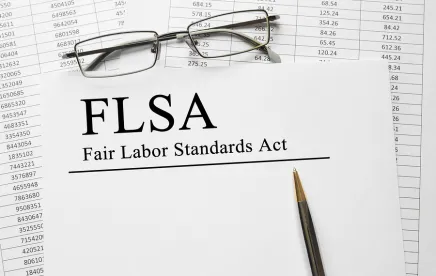Exemption rules under the Fair Labor Standards Act (FLSA) are complicated and can often be frustrating for employers. Determining which employees in a workforce may or may not be exempt from entitlement to overtime pay requires a detailed analysis of complex regulations. The result of an employer’s analysis can be very consequential for the organization. If an employee, or worse, a group of employees, are improperly classified as exempt the result can be liability for years of unpaid overtime. Investing time now in an analysis of your employees’ exemption statuses can save time and money down the road through the avoidance of the cost of unchecked improper classification.
A recent case in the U. S. Court of Appeals for the Sixth Circuit (covering Kentucky, Michigan, Ohio, and Tennessee) shows that even when an employee appears to meet the standard for exemption, a close reading of the rules is necessary. In the case, two welding inspectors sued their employer on behalf of themselves and a class of similarly situated welding inspectors for failure to properly pay overtime, contending that they were improperly classified as exempt. The employer determined that the welding inspectors were not entitled to overtime because they satisfied the FLSA’s exemption for highly compensated employees. In the case, there was no dispute that during the time period in question the employees were paid above the required threshold for a highly compensated employee. However, there is more to the analysis of the exemption for highly compensated employees than the total of their resulting pay.
Under FLSA regulations, an employee qualifies as an exempt “highly compensated employee” if three tests are met: (1) a duties test; (2) a salary-level test; and (3) a salary-basis test. The salary-basis test requires that the employee receives, on a regular basis, a predetermined amount which is not subject to reduction by the quality or quantity of the work done. In other words, the regular payments to the employee cannot be variable, and must be guaranteed despite the amount of time worked by the employee, or the quality of the employee’s work.
In the Sixth Circuit case, the employees were paid above the required threshold, and the evidence showed that during the time period in question, they were paid a consistent amount each pay period. To the average employer it may seem that the employer complied with the requirements of the FLSA.
So why did the Court of Appeals hold that the lower court was wrong when it dismissed the case in favor of the employer? The key to the Court of Appeals’ ultimate determination that the employees were non-exempt lies in the employees’ offer letters. The offer letters stated the daily rate the employees would be paid: “$337.00/Day Worked.” The company also communicated to the employees that they would be on a schedule of six 10-hour shifts per week. However, because the pay was measured per day, which could have changed from pay period to pay period – even though it was consistently six days of pay in each pay period during the time in question – the court held that the amount paid per pay period was not guaranteed and could have been reduced based on the quantity of work done. For this reason, the employees did not meet the salary-basis test, and were not exempt.
As this case shows, a close reading of FLSA exemption regulations is required to ensure that employees an employer believes should be exempt are truly exempt under the law. Employers should periodically review the classifications of their employees, as well as the FLSA regulations, and consult with counsel when in doubt, in order to ensure compliance with the FLSA and avoid costly misclassifications.




 />i
/>i

